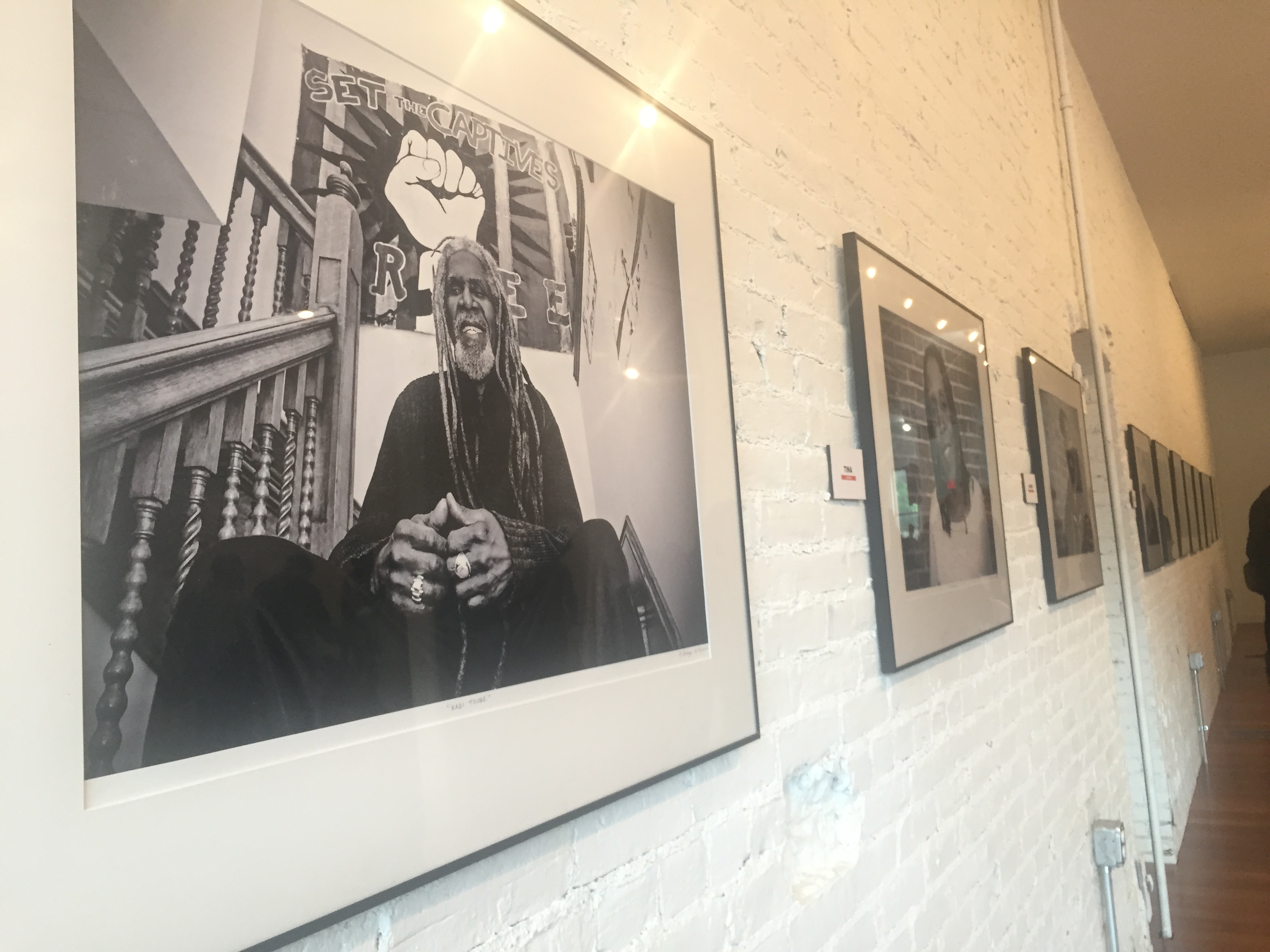The crowd stayed silent while listening to William Morales, 47, share his story about life after prison. He talked about his struggles and achievements on stage that evening at the reception for the photography exhibit, “From the Inside Out: Reflections After Incarceration,” which took place on Friday, May 26, at the Black Market in Roxbury. His portrait photo was one of 12 hanging on the wall.
“I was serving a sentence, because I can’t read and write a sentence,” Morales said, describing himself as a victim of the societal system.
Hundreds of people attended the reception, which was hosted by two organizations, United for a Fair Economy (UFE) and the American Civil Liberties Union (ACLU) of Massachusetts, to bring awareness about the crisis in the incarceration system and how it affects communities throughout Massachusetts.
Citing the Economic Policy Institute, UFE said that a black child is six times more likely than a white child to have or have had an incarcerated parent, and children of incarcerated parents are more likely to drop out of school and misbehave in school. UFE also cited the National Center for Education Statistics of the U.S. Department of Education, claiming that from 2011 to 2012, blacks incurred the most school debt at 72 percent, Native Americans ranked second at 62 percent, Pacific Islanders at 51 percent, Latinos at 51 percent, whites at 56 percent and Asians at 38 percent.
The photography exhibit focused on the lives of those who had been incarcerated and now live among their community as friends and neighbors. When Eroc Arroyo-Montano, a Boston artist and community organizer, took these photos, he instructed each featured person to imagine how they would want their family to see them if the photo was given to their family. From there, he snapped their photos, and with the help of his friend, he added a black and white filter, put a thick black frame around each photo and exhibited them.
The attendees included community leaders, artists and activists like Chuck Turner, an activist who served as a Boston city councilor and was a convicted felon. The featured guests, like Morales, who were photographed by Arroyo-Montano also attended. One woman who featured in the exhibit was still on parole at the age of 66. She had earned a master’s and a bachelor’s degree.
“I don’t really know what’s better than to be around people who want to lift you,” Arroyo-Montano said about the warm energy of the crowd that evening. “To be around people who don’t look at you as a monster and who don’t dismiss you,” he said.
He added that he wants people to walk away from the exhibit cherishing the idea of a beloved community and realizing what life can be like after prison, despite societal stigma, when there’s the love and support of communities
The evening started with guests helping themselves to Jamaican food, and there was enough to feed 400 people. Live music, poetry performances and stories followed.
Morales, who was arrested aged 17 and was released in 1995 when he was 25 years old, told a story about when he first found out that his young brother was shot and killed by two Boston police officers after an altercation. He was in prison at the time. Although he was distraught from the news, he was motivated to live his life to the fullest in honor of his brother. When he was released from prison, he committed himself to excelling in reading and writing, as he didn’t know how to do either when we was first put in prison. He now works as a youth leader, writes everyday and performs storytelling. He’s also earned college degrees and is a father.
Ending his story with some advice to the crowd, he told everyone to “vibe with your community and take care of your community.” He also encouraged the community to view those who are now living life after incarceration “no longer as threats, no longer as liability, but as assets.”

Leave a Reply
You must be logged in to post a comment.